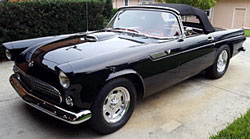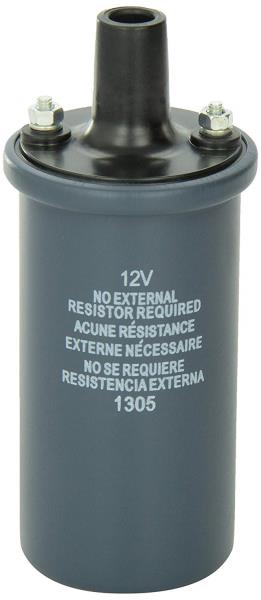|
Author
|
Message
|
|
DryLakesRacer
|
|
|
Group: Forum Members
Last Active: Last Year
Posts: 1.7K,
Visits: 340.1K
|
I’ve run a Pertronix ll for 6+ years using their recommended coil. Prior to installing I called their tech line (I’m about 20 miles from them) to ask about using the stock resistor. The tech said either way would be fine other than the use of the resistor would not have the same voltage to the plug. I chose to use the resistor, the engine never misfires, plugs are always clean when I check. I’ll give up a little performance for reliability any time. Good luck
56 Vic, B'Ville 200 MPH Club Member, So Cal.
|
|
|
|
|
ian57tbird
|
|
|
Group: Forum Members
Last Active: Last Year
Posts: 498,
Visits: 21.7K
|
Just as a side point. An old friend of the family who has long since past, told me in the early days they would put a large button in the lead from the coil to the distributor to up the voltage and get a stronger spark. Possibly talking pre-war times.
|
|
|
|
|
Gene Purser
|
|
|
Group: Forum Members
Last Active: 5 Years Ago
Posts: 220,
Visits: 6.0K
|
The gap across the button let the coil voltage rise higher. Usually trying to fire oil-fouled plugs.
|
|
|
|
|
slumlord444
|
|
|
Group: Forum Members
Last Active: Yesterday
Posts: 1.2K,
Visits: 137.8K
|
I've run the Pertronix I and recomended coil in my T Bird without the resistor.for many years with no issues. Switched to the Pertronix II and recomended coil with no resistor several years back and no issues. Been running the Pertronix I in my 65 Mustang with no resistor and the recomended coil for a while with no Issues. Been running a Pertronix in my Two Cylinder John Deer with no problems for many years. Maybe I'm just lucky.
|
|
|
|
|
Florida_Phil
|
|
|
Group: Forum Members
Last Active: 3 Years Ago
Posts: 1.2K,
Visits: 285.6K
|
I am running a Pertronix I with a Pertronix 1.5 Ohm coil with no resistor. The only problem I have had has been with the Electronic Tach. I had to add a 10 Ohm resistor to get the tach to read right. Other than that, no problems.

|
|
|
|
|
Lord Gaga
|
|
|
Group: Forum Members
Last Active: 2 Years Ago
Posts: 464,
Visits: 183.3K
|
So, remember you old timers, the demonstration of the "Hot Spark Intensifier" at the county fair?
I'll bet the unit was nothing more than a coat button and a few wires inside that box!!!!
AH-HA!
"FREE SAMPLE"
|
|
|
|
|
BamaBob
|
|
|
Group: Forum Members
Last Active: 2 days ago
Posts: 157,
Visits: 11.7K
|
I remember those demonstrations. I have a question though. How was the button installed to create the spark gap? I've tried to picture it in my mind, but it eludes me!
|
|
|
|
|
Gene Purser
|
|
|
Group: Forum Members
Last Active: 5 Years Ago
Posts: 220,
Visits: 6.0K
|
You cut the wire and strip the insulation so there is about an inch of bare wire exposed on both pieces. Tie the stripped wire into the button holes diagonal to one another so as to create a gap for the spark to jump. I've seen them placed on an individual plug wire to help an oil fouled single plug.
|
|
|
|
|
KULTULZ
|
|
|
Group: Forum Members
Last Active: Last Year
Posts: 1.8K,
Visits: 306.3K
|
As a technical point, I hear people sometimes say a particular ignition coil "has an internal resistor". I'm not sure this is correct. I've never seen one. Maybe.
One Example - FORD DURASPARK I

____________________________
|
|
|
|
|
BamaBob
|
|
|
Group: Forum Members
Last Active: 2 days ago
Posts: 157,
Visits: 11.7K
|
Gene, thanks for the answer! My Daddy told me years ago about creating a spark gap to make Ford A-Models run, but he never told me how it was done. I remember asking him one time why it made them run better and he said he didn't know, it just did. The part about building up the voltage in the coil to create enough power to jump the gap makes perfect sense. I miss my Daddy, he's been gone 33 years now.
|
|
|
|